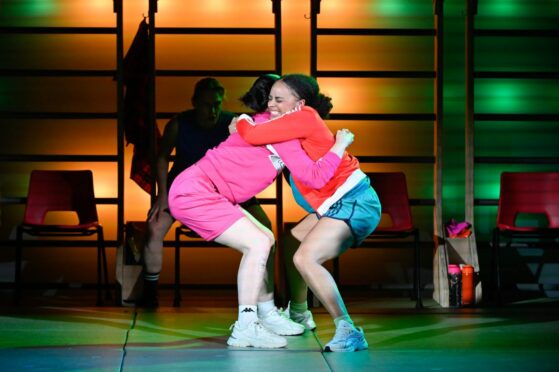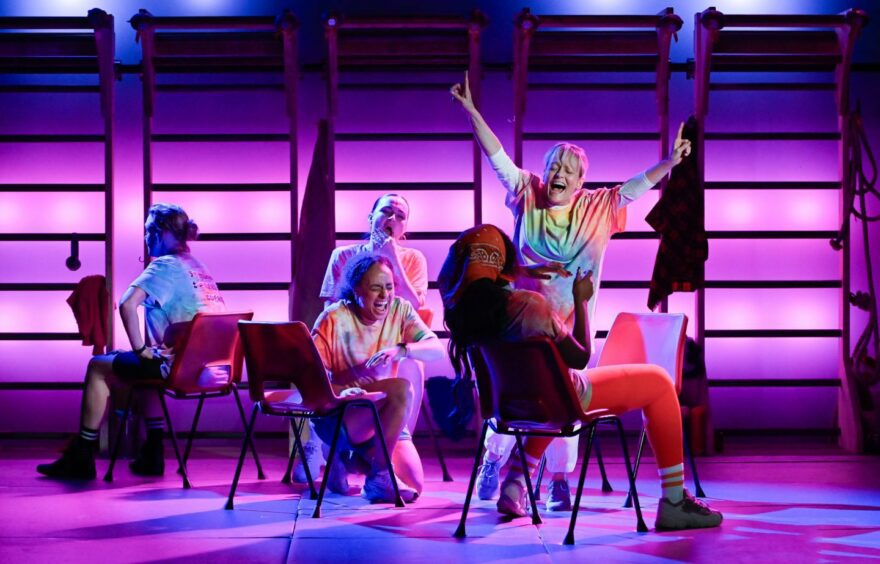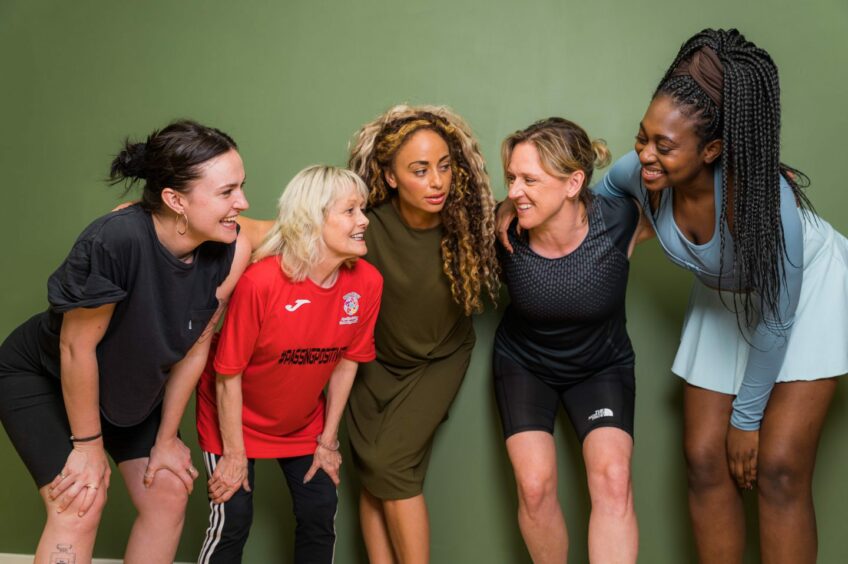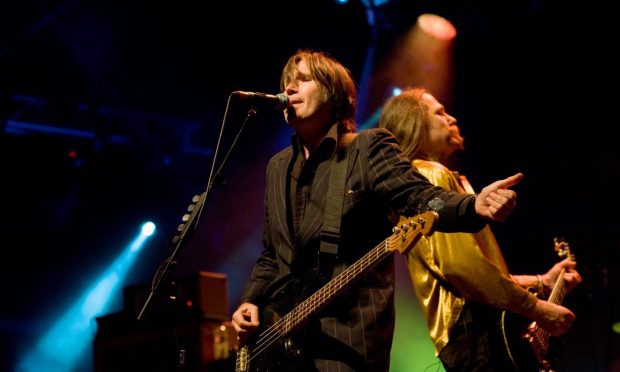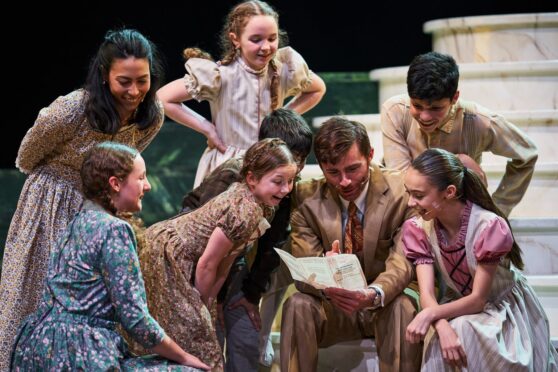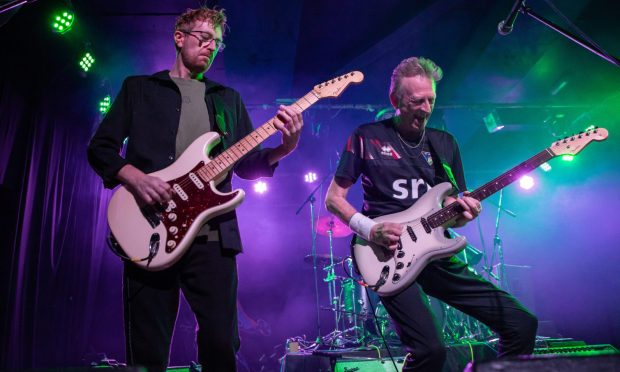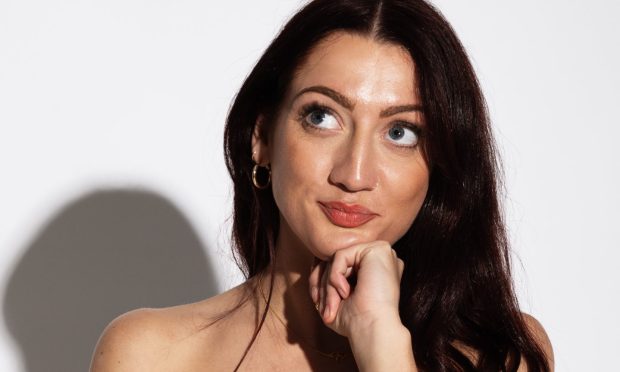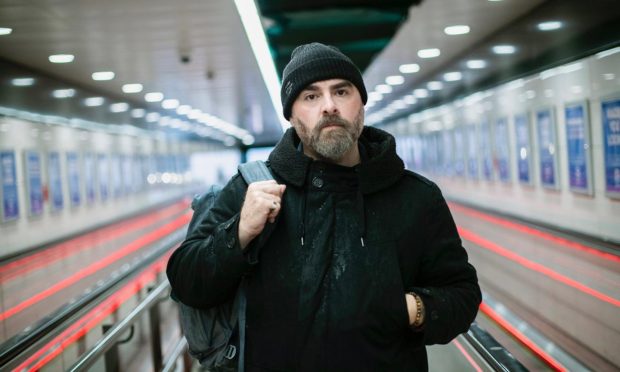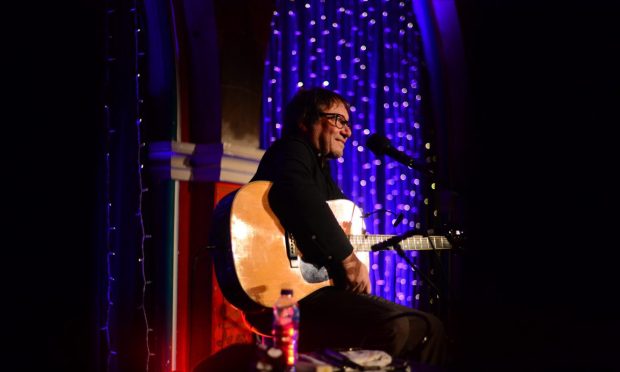Backhold wrestling is a form of wrestling like no other, explains writer and sometime dancer Nat McCleary, who has written a new play named Thrown on the subject for the National Theatre of Scotland.
“Backhold wrestling is an ancient martial art,” she explains. “Its main function was to prepare Scottish soldiers for battle, they would wrestle one another to get their blood up before running down the hillside at the enemy.
“Then it became a royal exhibition for Royals, a way of appeasing and entertaining and showing Scotland’s prowess. The Highland Games was a part of that whole construct, and so it naturally became part of the Highland Games.”
She says the rules are simple – a wrestler clasps hands behind their opponent’s back, then they wrestle one another to the ground.
“Should any part of the body aside from the foot touch the floor, then you concede, or if your hold breaks, you’ve also conceded,” she explains.
“It’s as simple as that, but it’s definitely exciting to watch, although it can be over in a second.”
Playwright is ‘proudly’ working class
McCleary grew up “proudly working class” in Coatbridge, then she stumbled into the arts.
Her first love in childhood was competing in team sports like football and athletics, but she tried an evening class in contemporary dance because she liked the sound of it.
Later she went to London to train as a contemporary dancer; even later, a director friend offered her an acting role, which she also discovered she loved.
Writing was a new discovery during lockdown, and Thrown was created after a conversation with a backhold wrestler named Heather Nielson.
“I approached the NTS and said, I’d really like to explore if there’s a possibility of a story in it,” says McCleary.
“They generously offered me a few days in a room with some actors and a director, and we discovered there was something to be explored in the metaphor of backhold wrestling as identity, on a national and personal scale.”
She explains more about what happens in the play.
“It involves a journey of five women who, for their own personal reasons, decide to embark on a journey into backhold wrestling, and they tour Scottish Highland Games competing as a team.
“Fundamentally it’s about the question of how we form a team when there’s real diversity and a mix of demographics. How do we form unity, and is it possible to be unified when we’re all so different?
“To me that spoke so clearly to where we are in Scotland at the moment,” she continues.
“I feel like Scotland’s identity is very much in flux, so the whole thing is about wrestling out your identity, wrestling out your sense of self, wrestling out unity. I thought this sport would be a perfect vehicle for exploring these things metaphorically.”
These feeds into lots of different avenues, she says.
‘Difficult conversations are necessary’
Of course, there’s the question of national identity in terms of Scottish independence or British union, but also there’s “the intergenerational path – I think it’s important to see different generations attempting to relate to one another. It’s also an interracial path. There are lots of questions raised as a result of proximity to someone who looks different to you, or speaks or thinks differently to you.
“Difficult conversations are such a necessary part of understanding and empathy,” she continues.
“I think we’re losing the ability to have honest and curious dialogue about someone else’s position on politics or gender or sexuality; on really difficult, big topics that get to the root of our sense of identity.
“Hopefully this play explores whether you can still find a way through to empathy while disagreeing with the people you’re attempting to build a community with.”
Under director Johnny McKnight, it will also be funny – and with the entire Edinburgh Festival run at the Traverse Theatre already sold out, this will be one of audiences’ few chances to see the show this summer.
Thrown is at Birnam Arts, Dunkeld, on Wednesday July 26. For tickets and more information, visit the National Theatre of Scotland’s website.
